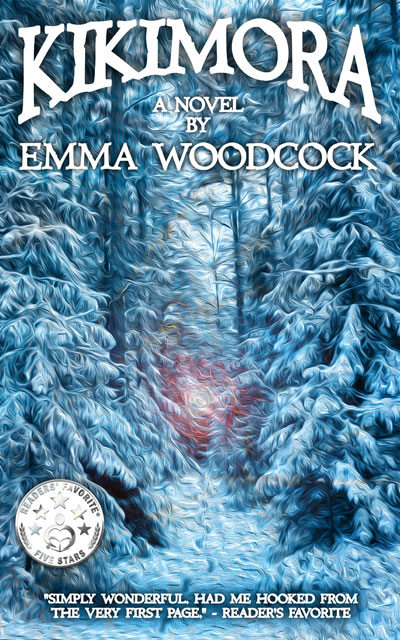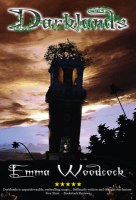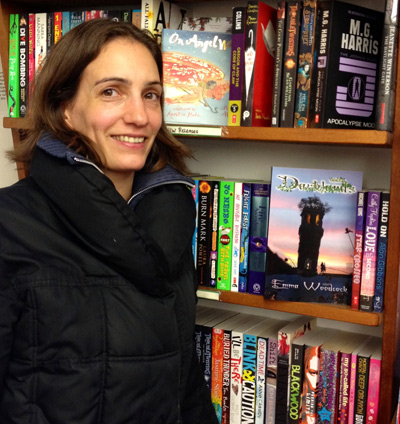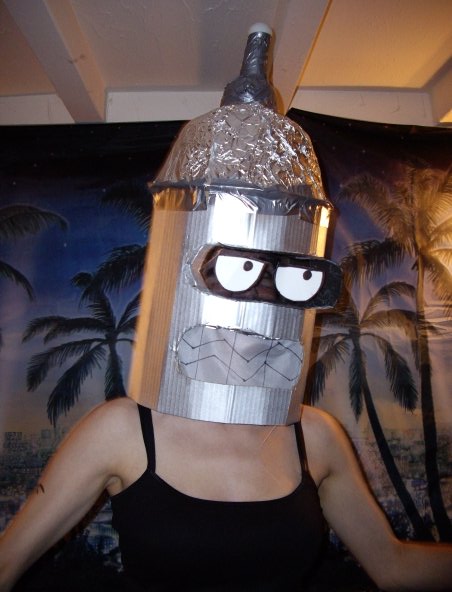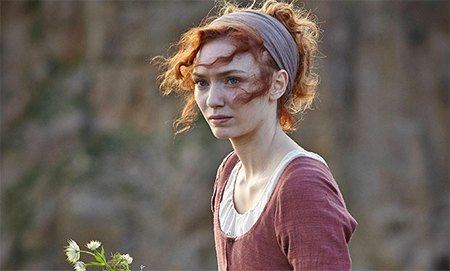The following is an edited transcript of an illustrated talk I gave at Inspired at Wirksworth Festival on Tuesday 19th September 2017.
I’m going to talk about a piece of art that was a very direct inspiration to me. But also about some of the other ideas and influences which fed into the creative process, and helped to shape what eventually became my second novel. I want to show the sometimes meandering route that inspiration can take, the seeming dead-ends, and the role chance can play in tying a lot of disparate ideas together.
Seven years ago, in October 2010, I’d recently published my first novel, Darklands, and I finally had time to think about what I was going to write next. I had it in my head I’d like to write a ghost story. I’m not quite sure why, but I’ve always enjoyed the creepy and macabre.
I did some initial research. I took a field trip to an Elizabethan manor house, Baddesley Clinton in Warwickshire, which boasts not one, but three, priest holes.

Baddesley Clinton, Warwickshire, entrance

Baddesley Clinton, Warwickshire, side view with moat

Baddesley Clinton, Warwickshire, detail of tiny windows
A priest hole is a small hidden room where Catholic priests could hide to avoid persecution during a time when it was illegal to practice Catholicism. This was because of various Catholic plots against the life of Elizabeth I. Catholicism was considered high treason, and punishments could include torture and death. When the authorities came round, a priest might have to hide in one of these cramped spaces in the dark for hours, or even days, before he could be safely released.
I’m sure you can imagine the creepy and sinister potential of a forgotten priest hole in a ghost story.
So I had a few ideas, and some atmospheric material from my field trip, but I didn’t yet have a story.
One day I was driving to work, and listening to the radio, as usual, and I heard Anatoly Lyadov’s tone poem, Kikimora.
Pleasant though it was, I can’t say it actually grabbed me that much at the time (though I’ve listened to it a lot since, and love it more each time). But what particularly struck me that day was after the music finished the presenter read out Lyadov’s program notes about Kikimora.
This is what he wrote.
“She grows up with a magician in the mountains. From dawn to sunset the magician’s cat regales Kikimora with fantastic tales of ancient times and faraway places, as Kikimora rocks in a cradle made of crystal. It takes her seven years to reach maturity, by which time her head is no larger than a thimble and her body no wider than a strand of straw. Kikimora spins flax from dusk to dawn, with evil intentions for the world.”
As soon as I heard those words it was a story I wanted to read. It conjures so much that is familiar from the kind of stories I loved when I was growing up, from fairy tales and folk tales.
Kikimora grows up with a magician – like so many iconic protagonists. Like the Sorcerer’s Apprentice, like The Once and Future King, like many of Diana Wynne Jones’ books: Howl’s Moving Castle, Charmed Life, The Lives of Christopher Chant.
The magician’s cat can speak – like the Cheshire Cat in Alice in Wonderland. Like Aslan. And, again, there are many examples in Diana Wynne Jones’ books.
The cat tells endless stories – like Sherazade in 1001 nights.
Kikimora’s head is no larger than a thimble – bringing to mind classic fairy tales, like Thumbelina or Tom Thumb.
And like Rumpelstiltskin, she spins flax.
With just a few words Lyadov has summoned a storm of associations and memories – treasured memories from childhood, of the magical, fantastical stories I loved best, and that transported me to other lands and other lives.
But then right at the end, he gives it a twist: she has evil intentions for the world. So is she the heroine of this story, or is she the villain?
I wanted to find out. So I searched online for books about Kikimora – and I found nothing. She had a mention in a couple of books on Russian and Slavic folklore, and a wikipedia page, but I could find absolutely no fiction in English that mentioned her.

Kikimora, 1934 illustration by Ivan Bilibin
I found it incredible that seemingly no one had picked up on this gem of a story, when it seemed to me so ripe, so full of potential. I decided that I would write her story.
I read what little I could find on Kikimora. She’s a figure from Slavic folklore, a kind of household spirit. She often lives behind the stove, and helps good, respectable housewives who leave out offerings for her, but plays tricks on mean or slovenly households.
In reading about her, I found other fascinating figures from Slavic folklore, and they also found their way into my story. Such as Leshy. Leshy is a spirit or god of the forest. Like Kikimora he can be kind or troublesome, depending how he is treated. He can shape-shift, and can be very temperamental.

Leshy, from a magazine cover, 1906. I’ve been unable to find the artist’s name.
Rusalkas also feature in my story. If you’re not familiar with Rusalkas, they’re basically a Slavic, fresh-water mermaid. They live in the water, are very beautiful, and lure unwary men to their death.
But again, they are not always seen as evil in early traditions. And I think this ambiguity in all these folklore characters is a large part of what appeals to me about them. They are largely reactive – they treat humans according to how humans treat them. And that seems a very obvious, but still very powerful way to view the natural world – which I think is essentially the purpose of a lot of folklore. In a pre-scientific and pre-industrial age, to try and make sense of the often cruel and capricious world around us.
These Slavic characters may well be unfamiliar to you, and you might wonder why I was so drawn to them and their stories. How could they mean anything to me?
But although their names are unfamiliar, there is much about them that is familiar. There is a universality in these characters which transcends their origin. The same tropes and archetypes are evident throughout British folklore, European fairy tales, and mythologies from all around the world.
Rusalkas have obvious parallels in mermaids, sirens, kelpies – our more local versions, Jenny Greenteeth or the grindylow.
In British folklore, we have our own versions of household spirits, like Hobs or brownies – or Dobby the house elf.
When I was growing up my family had our very own version: Icky. I’ve no idea where the name came from, but whenever something went missing or a mess was made that no one would own up to, we said it must have been Icky.
Even the very fact of being Russian seems kind of familiar. The Brothers Grimm collected their fairy tales from all over Europe – including Russia. And many of the most evocative and beautiful fairy tale illustrations have a Russian flavour to them. Such as the works of Jan Pienkowski or Edmund Dulac.

Fairy Tales, illustrated by Jan Pienkowski
So I gathered a great amount of inspiration from these folk characters. I had Kikimora, my protagonist’s, origin story in the quote from Lyadov, and I had a sense of conflict or unease between humans and the natural world.
The inspiration that had eluded me when I was trying to write a ghost story came flooding in. I was very close to having a story. But one more ingredient came along which directed the course of the novel.
I mentioned at the beginning that it was October 2010. If you remember, it was during that time that 33 miners were trapped deep underground in a copper mine in Chile. By then the men had been trapped for two months. Their story gripped the public imagination, and it gripped me just as much as everyone else.
I have long had a mingled horror and fascination for underground spaces. There is something primal about being deep underground – think of the neolithic cave paintings of Lascaux and Altamira.
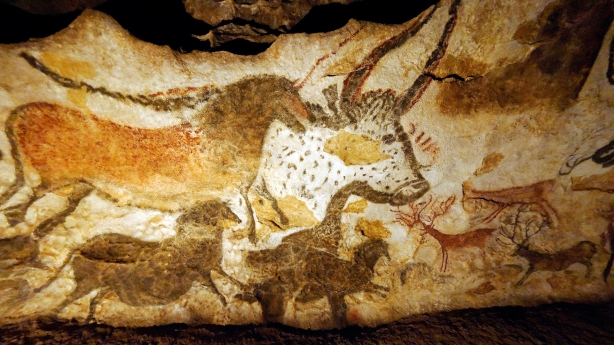
cave paintings at Lascaux
The common interpretation of these paintings is that they serve some sort of spiritual or ritual purpose.
Think of hidden caverns where incredible, gigantic crystals grow, such as Naica cave in Mexico.

Naica Cave, Mexico. Look at the size of these crystals. It’s like Superman’s fortress of solitude!
Underground places can be beautiful, awe-inspiring.
But they are also dangerous, and frightening on a very primal level. All that weight of earth and rock balanced above you. The fear of your only light being extinguished – of the utter, pitiless darkness. Of being trapped. Lost. Alone. Being unaware of anything happening outside the cave – say, torrential rain that could flood the caves before you know a thing about it.
When those Chilean miners were finally safely rescued it seemed the whole world breathed a sigh of relief.
All of these things fed into the story I eventually wrote.
And in the end, I did write a sort of ghost story, without realising it. My version of Kikimora creeps around someone else’s home, silent and invisible, doing mischief, throwing things on the floor and causing trouble. Just like a poltergeist.
I even used the idea of being trapped in the dark – albeit, being trapped underground, rather than the priest hole I was initially researching.
I used characters and tropes from folklore and fairy tales – but they are very much my own personal take on those characters.
I seasoned it with the mingled terror and awe I feel about underground spaces.
And of course, in any story there must be conflict. In this case, another of my preoccupations, the conflict between humans and nature, between technological advancement and the exploitation of the planet’s resources.
Thank you for taking the time to read my story about writing a story.
I include below a short excerpt from Kikimora.
To set the scene, Anatoly is a powerful magician. He lives in splendid isolation in the mountains of Korsakov forest. Every month he plays cards with his friends, Leshy and the North Wind, and they stay up very late, drinking lots of vodka and setting the world to rights, as men are inclined to do.
Between them they try to ensure the natural world is all in order, and things are kept in balance. But they are disturbed by the activities of some miners from the nearby town, who are encroaching on the forest, and don’t show the proper respect.
During one drunken night they hatch a plan to deal with the miners by creating a monster. This Anatoly does, but his plan goes awry from the start.
He names his monster Kikimora.
Excerpt from Kikimora
Kikimora gathered up her embroidery to finish in the pantry. It was cold in there, but that had never troubled her. She was a creature of the cold, and though she enjoyed the comfort of a crackling fire, her resilience to Korsakov’s bitter winters was remarkable. She had never owned a pair of shoes, nor felt their lack.
She was almost at the door, when the North Wind said, “Wait. How old are you now, girl?”
“Almost seven.”
Anatoly’s long fingers fumbled as he filled the glasses, which all clinked and rattled against one another.
“Has it been so long?” asked the North Wind in some surprise. “Surely it is time?”
Anatoly swallowed his vodka at a gulp. “There is still much I would teach her. Her reading is sorely neglected. She has not yet begun The Art of War-”
The North Wind snorted his disdain. “She might have completed all the reading even you could wish for years ago if you didn’t have her working as your skivvy all the day long! I heard your banshee wail,” he told Kikimora. “It wasn’t too bad. What else can you do? Can you sour the milk with an evil thought?”
Kikimora nodded.
“Can you hide from human eyes? Creep past men silent and unnoticed?” Two more nods.
“Can you send bad dreams to trouble the sleep of man, woman or child?”
She hesitated.
“Well?”
“I have no one on which to practice such a skill.”
The North Wind frowned and harrumphed. “What of that cat I’ve seen around the place? Surely you could disturb its sleep?”
Kikimora’s eyes grew wide at this suggestion, and Anatoly muttered that it was more than any of their lives were worth to interfere with the cat.
Leshy took a bite of cake, and exclaimed at its sweetness. Washing it down with a mouthful of vodka, he added that he’d never tasted finer spirit. Kikimora knew he was trying to cheer her up, and she summoned a smile to show she appreciated it.
“Congratulations,” the North Wind said sourly. “Your monster is a fine cook and house-keeper. How those men will tremble in their boots.”
